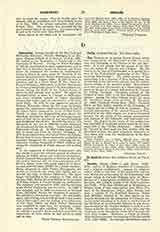

Dax, Diocese of, an ancient French diocese which was suppressed by the Concordat of 1801, its territory now belonging to the Diocese of Aix and Bayonne. It is not certain that the patron of the diocese, the martyr St. Vincent, was a bishop. His cult existed in the time of Charlemagne, as is proved by a note of the Wolfenbiittel manuscript of the “Hieronymian Martyrology“. The oldest account of his martyrdom is in a breviary of Dax, dating from the second half of the thirteenth century, but the author knows nothing of the martyr’s period. Excavations near Dax proved the existence of a Merovingian seminary on the site of a church dedicated to St. Vincent by Bishop Gratianus. Gratianus, present at the Council of Agde (506), is the first historically known bishop. Among the other bishops of the see were St. Revellatus (early sixth century), St. Macarius (c. 1060), Cardinal Pierre Itier (1361), Cardinal Pierre de Foix (1455), founder of the University of Avignon and the College de Foix at Toulouse. The, synodal constitutions of the ancient Diocese of Dax, published by the Abbe Degert, are of great historical interest for the study of the ancient constitutions and customs of the thirteenth and fourteenth centuries. M. Degert in the course of this publication has succeeded in rectifying certain errors In the episcopal lists of the “Gallia christiana”. About 1588 St. Vincent de Paul made his first studies with the Cordeliers of Dax, but good secondary education at Dax dates only from the establishment of the Barnabites in 1640.
GEORGES GOYAU

